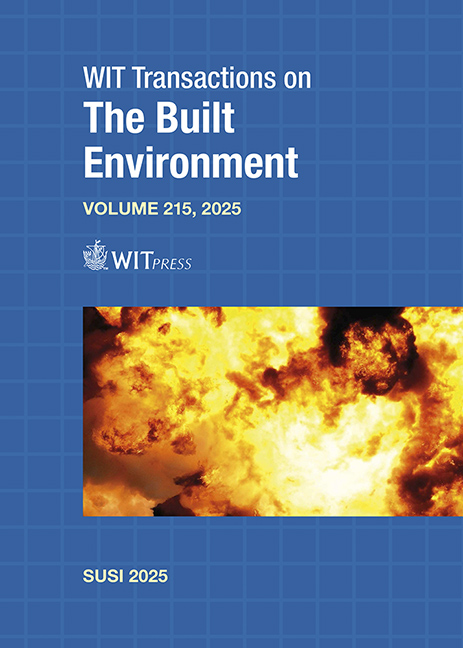MESOSCALE MODELLING OF CONCRETE SUBJECTED TO BALLISTIC IMPACT
Price
Free (open access)
Transaction
Volume
215
Pages
7
Page Range
109 - 115
Published
2025
Paper DOI
10.2495/SUSI250101
Copyright
Author(s)
ØYSTEIN E. K. JACOBSEN, MARTIN KRISTOFFERSEN, SUMITA DEY, TORE BØRVIK
Abstract
Concrete is a multiphase material commonly used in protective structures and critical infrastructure, consisting primarily of a cement matrix, aggregates and an interfacial transition zone (ITZ). The properties of the aggregates – such as volume fraction, size and shape – play a critical role in determining the overall performance and protective capabilities of such concrete structures. Modifying these aggregate properties offers the ability for enhancing the protective capacity of concrete. Given the extensive research and numerical modelling efforts on concrete subjected to various loading conditions using homogeneous models, it is worth exploring mesoscale modelling approaches where the cement matrix and aggregates are modelled separately. By doing so, we may uncover optimized configurations or designs that provide superior protective solutions. In this paper we look at three themes: (1) An aggregate placing procedure to get sufficiently high-volume fractions in the concrete and the proceeding meshing. High volume fractions are commonly difficult to obtain using create-anddrop methods, so we have implemented an aggregate compacting workflow; (2) Finite element simulations in LS-DYNA of compression tests on cubes and cylinders, and comparison to relevant experiment data; (3) Numerical simulations of ballistic impact tests to investigate the influence of aggregate properties on the ballistic perforation resistance. With information available at the design stage, we create realistic two-phase heterogeneous meshes for finite element simulations in LS-DYNA and compare the results to a homogeneous mesh and literature data. We show that some of the scatter commonly seen in concrete experiments can be attributed to variation in aggregate placement when the cumulative volume fraction remains constant. The results are promising, the models are efficient, and the modelling workflow is streamlined.
Keywords
mesoscale modelling, ballistic impact, numerical simulations, material heterogeneity





